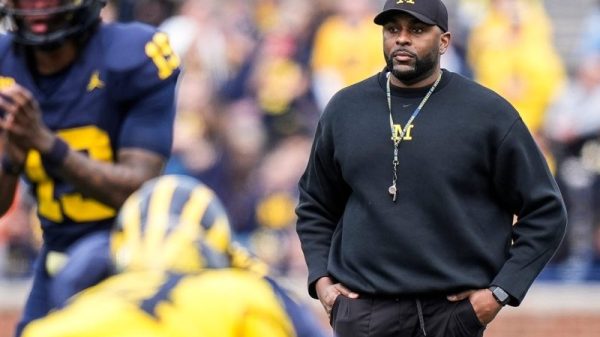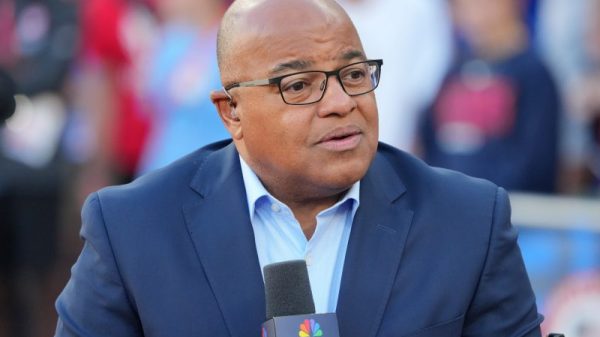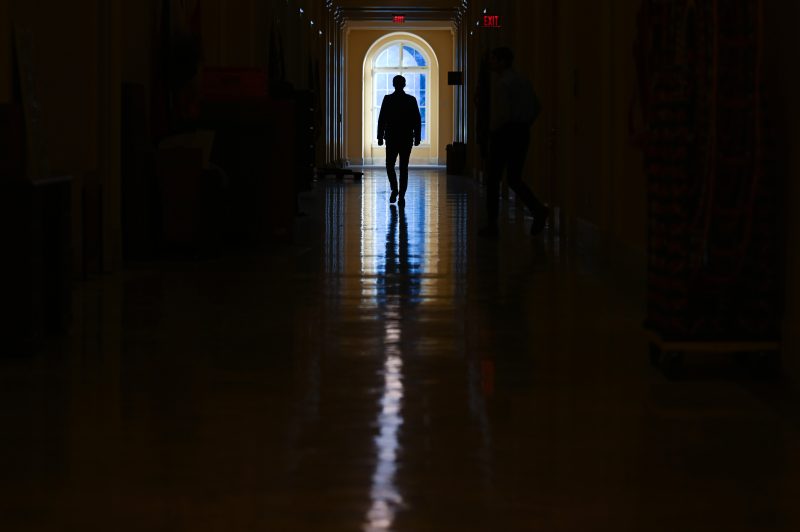The House select committee investigating the Jan. 6, 2021, insurrection at the U.S. Capitol has released an introduction to its final report. The committee also held its final public meeting on Monday, during which it made criminal referrals to the Justice Department for former president Donald Trump and others.
That referral — essentially, the committee formally urging the agency to investigate and to explore possible charges — was expected, and requires no official action. The Justice Department is already pursuing its own investigation.
But the hearing and the first 160-plus pages of material do include some new details, as the committee lays out its case for what would be a historic prosecution of a former president. Below are some takeaways on what we have learned so far.
It had already been anticipated that the committee would take this action. But until now, it hadn’t been clear which laws would be cited.
The committee made four criminal referrals against Donald Trump:
Obstruction of an official proceeding (18 U.S.C. § 1512(c)): The committee’s vice chair, Rep. Liz Cheney (R-Wyo.), spotlighted this law a year ago. It makes it a crime to “corruptly” seek to obstruct, influence or impede “any official proceeding,” or to attempt to do so. The official proceeding was Congress’s counting of the electoral votes on Jan. 6, which the committee says Trump tried to thwart through his various schemes and by directing his supporters to the Capitol after riling them up with false voter-fraud claims. The second key part of this charge is doing so “corruptly,” which is why the committee laid out extensive evidence that Trump was told his stolen-election claims were false, that participants knew their plot to overturn the election was illegal and that Trump acknowledged he had in fact lost. The committee also referred attorney John Eastman and others for violations of this statute.Conspiracy to defraud the United States (18 U.S.C. § 371): By citing this law to make a criminal referral of Trump, Eastman and others, the committee says that Trump did not work alone to commit the above offense. The committee did not “attempt to determine all of the potential participants in this conspiracy, as our understanding of the role of many individuals may be incomplete even today because they refuse to answer our questions,” said Rep. Jamie Raskin (D-Md.) during Monday’s hearing.Conspiracy to make a false statement (18 U.S.C. §§ 371, 1001): This concerns the so-called “fake electors” plot. The committee alleges that Trump conspired with others to submit to Congress and the National Archives alternate slates of Trump electors from key states, which in some cases involved falsely asserting in a legal document that they had been duly elected. Some of the fake electors themselves have faced legal scrutiny because of this.“Incite,” “assist” or provide “aid and comfort” an insurrection (18 U.S.C. § 2383): Trump was impeached for his alleged incitement of the mob but was later acquitted, despite a historic number of crossover votes by Republicans. The committee suggests Trump and others, through actions before and during the riot, satisfied each of the quoted words.
“These are not the only statutes that are potentially relevant to President Trump’s conduct related to the 2020 election,” said Raskin.
He added that the committee had also subpoenaed four members of Congress for information about Trump’s plans to overturn the election. None complied, so the committee referred them “for appropriate sanction by the House Ethics Committee.”
The committee has repeatedly pointed to Trump not only being negligent on Jan. 6, but perhaps approving of the violence that day (or at least perceiving some advantage in it). And the final report adds more details on that front.
Specifically, it says that:
Longtime Trump aide Hope Hicks texted a campaign aide during the riot that, on Jan. 4 and 5, she’d said Trump should preemptively call on those attending his speech on the Ellipse to be peaceful: “I suggested it several times Monday and Tuesday and he refused.” The request (which she did not make to Trump personally) fell upon deaf ears.Hicks also testified that White House lawyer Eric Herschmann made a similar request — in his case, to Trump himself, according to the committee.
The committee also played video Monday of White House adviser Kellyanne Conway recounting a conversation with Trump the day after Jan. 6. Conway said she called the situation “terrible” and “crazy,” to which Trump responded, “No, these people are upset. They’re very upset.”
This builds on what we’d already learned about Trump’s attitude to the riot as violence unfolded. Both Rep. Jaime Herrera Beutler (R-Wash.) and former acting White House chief of staff Mick Mulvaney have said that Trump lamented that members of Congress weren’t as upset as the mob. White House aide Cassidy Hutchinson has testified that Trump was aware that people who attended his speech before the riot were armed, before he told them to march to the Capitol anyway. And White House aide Sarah Matthews has said White House press secretary Kayleigh McEnany told her that Trump didn’t want to call on the rioters to be peaceful — though he was ultimately convinced by his daughter, Ivanka Trump.
All of it would seem to confirm negligence, at the very least. And according to the report, Trump’s refusal to call for peace not only lasted hours into the riot; it also began earlier than previously had been known, in the days leading up to it.
Those who have cast doubt on whether the attack on the Capitol was truly an “insurrection” have argued that, if it were, there would have been more weapons. But that conceit ignored that most of the people who rioted weren’t apprehended at the time, so we didn’t really know how many people were armed.
And now the committee’s report reveals that plenty of weapons were indeed seized at the magnetometers outside Trump’s Jan. 6 speech on the Ellipse, before the riot.
Specifically, the report cites a November 2021 document produced by the Capitol Police and says: “Secret Service confiscated a haul of weapons from the 28,000 spectators who did pass through the magnetometers: 242 canisters of pepper spray, 269 knives or blades, 18 brass knuckles, 18 tasers, 6 pieces of body armor, 3 gas masks, 30 batons or blunt instruments, and 17 miscellaneous items like scissors, needles, or screwdrivers.”
And these were just the people who submitted to going through a magnetometer. The report adds: “And thousands of others purposely remained outside the magnetometers, or left their packs outside.”
As for firearms, the report notes six cases in which people were observed carrying guns or what looked like guns near the Capitol before Trump’s speech began.
Hutchinson had previously testified that Trump was told about weapons being seized at the magnetometers but didn’t care; indeed, he said he wanted the magnetometers gone because the security measure would keep out too many of his supporters. He still directed supporters to match to the Capitol.
The report features a chart juxtaposing instances in which someone told Trump, his campaign or the White House that a given voter-fraud theory was false — and later instances in which Trump continued to spout it. There is extensive evidence on this front. The idea, again, is proving that Trump knew what he was doing was corrupt.
Most of these instances were already known — especially the quotes from top Justice Department and Georgia officials — but a couple are new and worth noting. Specifically, they involve Trump being repeatedly told that his conspiracy theories about Dominion voting machines were unfounded.
In one instance, White House press secretary Kayleigh McEnany said she repeatedly sought to dissuade Trump from spouting the conspiracy theory, unsuccessfully:
(The committee did not regard McEnany as particularly forthcoming, though. At one point the report says that “a segment of McEnany’s testimony seemed evasive, as if she was testifying from pre-prepared talking points.”)
National security adviser Robert O’Brien said that he also tried to talk people out of the theory during a Dec. 18 call to the Oval Office.
“Somebody asked me, was there — did I have any evidence of election fraud in the voting machines or foreign interference in our voting machines,” O’Brien said. “And I said, no, we’ve looked into that and there’s no evidence of it.”
The committee notes that the following day, Trump tweeted that there might have been “a hit on our ridiculous voting machines.”
Finally, in case there was any doubt, the report quotes White House counsel Pat Cipollone saying that Trump and his allies were told repeatedly during a late-night Dec. 18 meeting at the White House that there was no evidence of fraud sufficient enough to flip the election.
“That was made clear to them, okay, over and over again,” Cipollone said.
The report features some new details on how dim a view members of Trump’s team took of lawyer Rudy Giuliani’s baseless allegations about the election. And in one instance, Giuliani himself essentially admits to promoting a false theory.
Perhaps the most colorful incident involves Trump campaign manager Bill Stepien, who said he literally locked his door to keep out Trump allies who wanted to press forward with stolen-election claims — but that Giuliani still tried.
“I had my assistant lock my door. I told her, don’t let anyone in,” Stepien said in an interview with the committee. He added: “And, you know, sure enough, you know, Mayor Giuliani tried to, you know, get in my office and ordered her to unlock the door, and she didn’t do that, you know. She’s, you know, smart about that.”
In a previously unreported text message, Trump campaign spokesman Tim Murtaugh suggested Giuliani might be disbarred over his “outrageous lies.”
“Why wouldn’t they expel him based solely on the outrageous lies he told for 2 1/2 months?” Murtaugh wrote to fellow campaign aide Zach Parkinson.
(The committee previously shared texts from Murtaugh to another campaign aide sharply criticizing Trump for not acknowledging a police officer who died that day because, in Murtaugh’s estimation, Trump worried he would be faulted for it. “Everything he said about supporting law enforcement was a lie,” Murtaugh said in the text.)
Finally, the committee quotes Giuliani admitting in his May 2022 deposition, “I do not think the machines stole the election.” But Giuliani at one point tried to get a Republican prosecutor from Antrim County, Mich. — the site of one of the most ridiculous voting-machine conspiracy theories — to turn over the voting machines to Trump’s team. Giuliani also, on other occasions, gestured in the direction of the conspiracy theory.
The report doesn’t shed a ton of light on a story relayed by former White House aide Cassidy Hutchinson that has been called into question.
Hutchinson had recalled hearing secondhand about an altercation in the presidential limo between Trump and the leader of his Secret Service detail, Bobby Engel, after Trump’s speech. She said White House aide and fellow Secret Service official Anthony M. Ornato told her Trump had lunged for the steering wheel when Engel told him they couldn’t go to the Capitol after Trump’s speech. (Secret Service sources anonymously disputed this.)
The committee says others testified that Trump was irate in the vehicle, but there is no further confirmation of Trump lunging at Engel. It says Ornato said he didn’t “recall that he conveyed the information to Cassidy Hutchinson regarding the SUV.” It doesn’t delve into Engel’s version of events.
The report, at multiple points, expresses the committee’s skepticism of Ornato’s testimony. It goes on to emphasize that Hutchinson was relaying the claim secondhand, and says the committee “has regarded both Hutchinson and the corroborating testimony by the White House employee with national security responsibilities as earnest and has no reason to conclude that either had a reason to invent their accounts.”
The committee has periodically suggested there might have been an effort afoot to obstruct justice by influencing the testimony of key witnesses. That’s one of the potential crimes spotlighted in the report — though not necessarily one the committee has directly tied to Trump.
And during the hearing Monday Rep. Zoe Logren (D-Calif.) indicated there was new evidence of this. Some of the quarter of a billion dollars which Trump raised using false stolen-election claims was used to hire lawyers, she said. Those lawyers took actions that the committee found concerning.
“For example, one lawyer told a witness, the witness could in certain circumstances tell the committee that she didn’t recall facts when she actually did recall them,” Lofgren said. “That lawyer also did not disclose who was paying for the lawyer’s representation, despite questions from the client seeking that information.”
Lofgren added that, in another case, “a client was offered potential employment that would make her, quote, ‘financially very comfortable’ as the date of her testimony approached, by entities that were apparently linked to Donald Trump and his associates. These offers were withdrawn or didn’t materialize, as reports of the content of her testimony circulated. The witness believed this was an effort to affect her testimony.”
Lofgren didn’t detail who might have been involved, but the committee has urged the Justice Department to examine this issue.



























